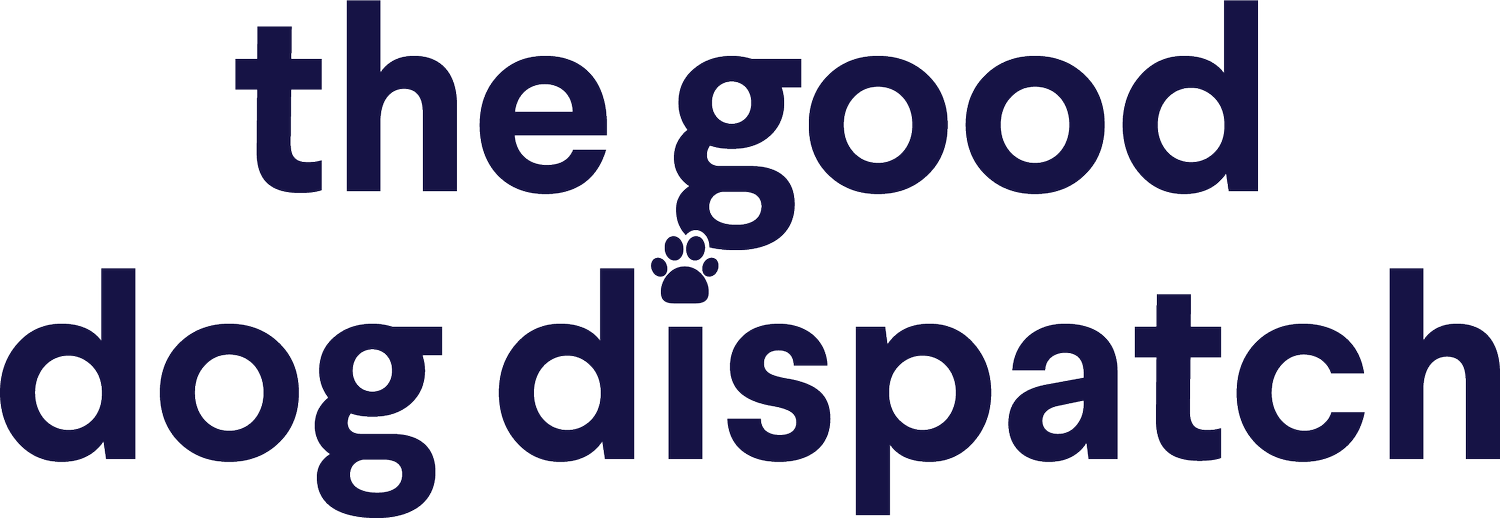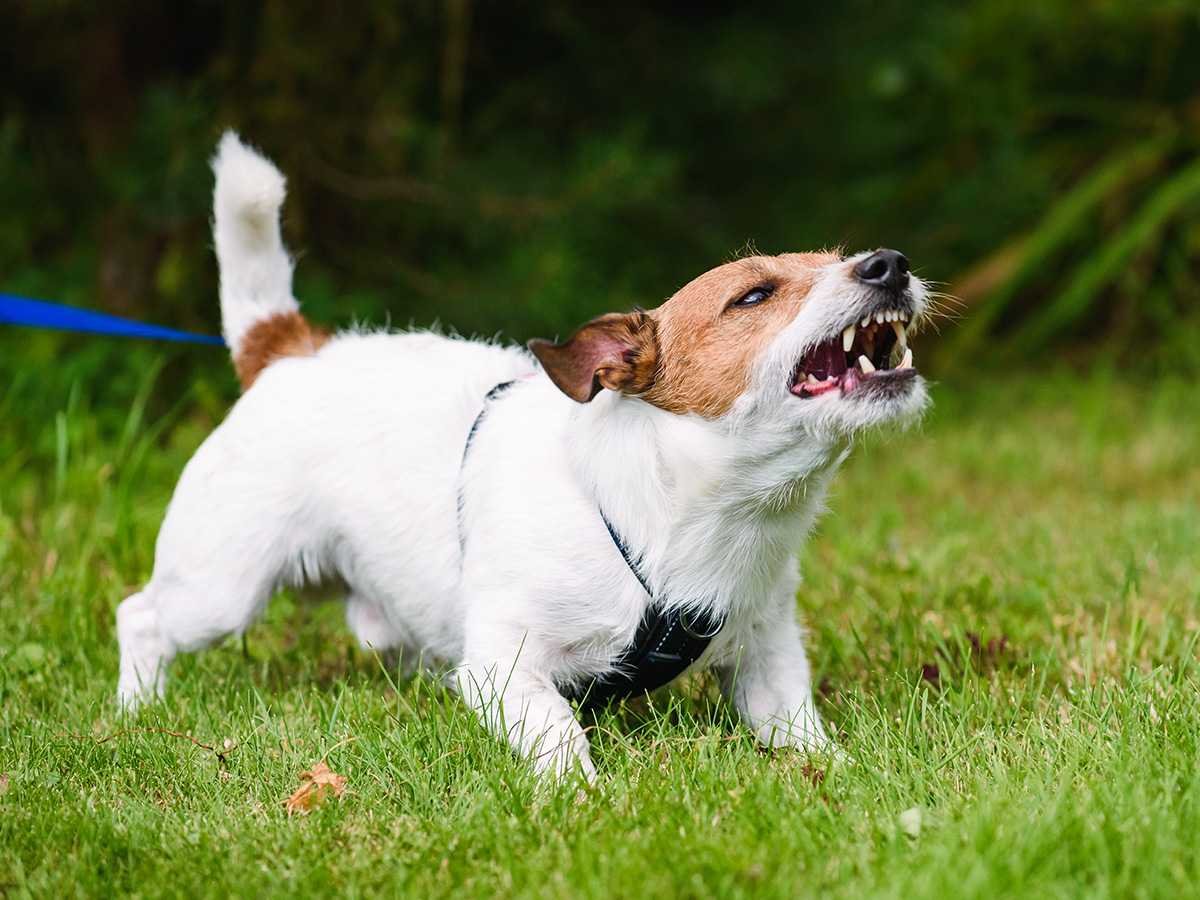How to tell when your dog might be about to bite
A wagging tail means a happy pup, right? Not quite. Here are some ways to tell when a dog might be about to bite.
A wagging tail means a happy pup, right? Not quite. Here are some ways to tell when a dog might be about to bite.
Though we wish it weren’t the case, humans and dogs don’t exactly speak the same language. Luckily, though, we can understand a lot of what our dogs have to say by getting to know their body language and meaningful movements (kind of like when you start to decode what their tails are telling you).
Getting familiar with how your dog communicates through movement is a great way to read your pup’s behavior and understand what they want, what they’re thinking, and how they’re feeling. While this is useful in a number of situations, it’s especially important when it comes to identifying — and, more importantly, avoiding — aggression. To help you sense when your dog might be about to act out or bite, here are a few warning signs to be on the lookout for.
Growling and snapping
Growling and snapping are the most obvious signs a dog is about to bite. The minute your dog starts showing his teeth and moving abruptly, slowly distance yourself from him to give him space and time to calm down.
When your pup growls and/or snaps at you, your pooch is actually communicating his intense sense of discomfort. He may simply be experiencing physical pain, defending his territory (he believes is under threat), or fearing his current surroundings (e.g., strangers, new environment, etc.)
With that in mind, it helps to keep a record of the times your dog acts notably aggressive. Keeping track of these ‘bad’ episodes will help you and your vet pinpoint your pup’s common triggers, which will in turn help you better manage the problem and efficiently work on changing this unruly behavior.
Lip licking, yawning, and an avoidant gaze
When you meet your sister’s dog for the first time, you really only want to cuddle and kiss the furry tyke! But before stuffing your face into Fido’s fur, analyze his facial expressions.
Is he licking his lips (when no food is around), yawning excessively, and averting your gaze? If that’s the case, Fido might be letting you know that he isn’t comfortable having you around just yet. Err on the side of caution by keeping your distance and giving him the time to familiarize himself with his new surroundings and environment.
Sclera sighting
When the white of a dog’s eyes (the sclera) is visible, he or she is showing signs of fear and discomfort.
The sclera becomes noticeable when a dog moves its head in one direction and stares at something in the other. For instance, if a dog feels overwhelmed by a child’s embrace, the pooch will face away from the child, but stare right into the child’s eyes, revealing a white patch on the outside corner of its eyes. This overtly watchful eye paired with anxious behavior (e.g., lip-licking, growling, hair-raising, etc.) and body immobility can reflect malaise; the dog feels unsafe in his or her environment.
When faced with a “white-eyed” — also known as a “whale-eyed” — dog, stop petting, and keep your distance, because it’s possible the dog might bite as a result of feeling threatened.
Rigid stance
A dog will stiffen its body, raise its tail high above its head, and perk its ears up in a situation of discomfort. If, as described, your dog becomes frozen out of fright, aggression, or anxiety, you might want to vacate the room immediately and give him some time to mellow out before you try to come back in for any cuddles.
Raised hackles
If your dog’s hair is raised down the neck, back, and/or tail, your pooch could be showing signs of fear, anxiety, excitement, nervousness, or anger. Whatever the case may be, if your dog’s hackles are raised, cautiously back-off. Give your pet the time to cool off before checking back in a few minutes.
Wagging tail
Most people assume that when a dog uncontrollably wags its tail, he or she is in a state of total happiness — which is usually correct, but isn’t always the case.
Taking a closer look at how your pup is wagging his tail could help you decipher between excited wags and potential bite-signaling wags. Before running to your pup for a loving embrace, make sure you pay attention to how your pup is wagging his tail. A ‘happy’ or relaxed wag involves a full-body wiggle (like a dance) whereas an ‘aggressive’ wag is a quick, rigid, back and forth motion (almost like a robot). If your puppy shows the latter, you might want to take a step back and give the pup some space.
Tucked-away tail and cowering
If your pup cowers away and tucks his tail between his legs every time you approach him, he’s afraid of you. This doesn’t mean he will bite you, but if pressured to interact against his will and beyond his comfort zone, he very much could. So despite how much you want to pet your furry friend, resist the temptation, and walk away. Once he’s ready, he’ll come to you!
In Summary
Getting familiar with how your dog communicates through movement is especially important when it comes to identifying — and, more importantly, avoiding — aggression.
Keeping track of these warning signs will help you and your vet pinpoint your pup’s common triggers, which will in turn help you better manage the problem and efficiently work on changing this unruly behavior.
Finn is here for you and your pup through all of the stages of their life, so follow us for more health and wellness information!





